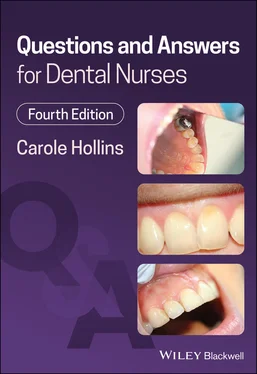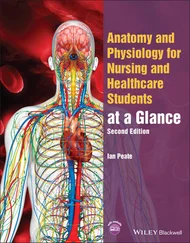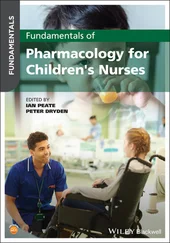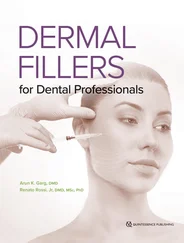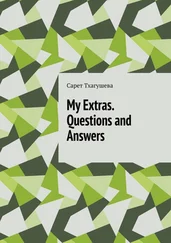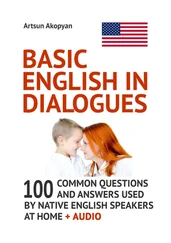Carole Hollins - Questions and Answers for Dental Nurses
Здесь есть возможность читать онлайн «Carole Hollins - Questions and Answers for Dental Nurses» — ознакомительный отрывок электронной книги совершенно бесплатно, а после прочтения отрывка купить полную версию. В некоторых случаях можно слушать аудио, скачать через торрент в формате fb2 и присутствует краткое содержание. Жанр: unrecognised, на английском языке. Описание произведения, (предисловие) а так же отзывы посетителей доступны на портале библиотеки ЛибКат.
- Название:Questions and Answers for Dental Nurses
- Автор:
- Жанр:
- Год:неизвестен
- ISBN:нет данных
- Рейтинг книги:5 / 5. Голосов: 1
-
Избранное:Добавить в избранное
- Отзывы:
-
Ваша оценка:
- 100
- 1
- 2
- 3
- 4
- 5
Questions and Answers for Dental Nurses: краткое содержание, описание и аннотация
Предлагаем к чтению аннотацию, описание, краткое содержание или предисловие (зависит от того, что написал сам автор книги «Questions and Answers for Dental Nurses»). Если вы не нашли необходимую информацию о книге — напишите в комментариях, мы постараемся отыскать её.
An essential study aid for dental nursing students preparing for the NEBDN exam Questions and Answers for Dental Nurses
Questions and Answers for Dental Nurses 4th Edition
Questions and Answers for Dental Nurses — читать онлайн ознакомительный отрывок
Ниже представлен текст книги, разбитый по страницам. Система сохранения места последней прочитанной страницы, позволяет с удобством читать онлайн бесплатно книгу «Questions and Answers for Dental Nurses», без необходимости каждый раз заново искать на чём Вы остановились. Поставьте закладку, и сможете в любой момент перейти на страницу, на которой закончили чтение.
Интервал:
Закладка:
Limit of Liability/Disclaimer of Warranty The contents of this work are intended to further general scientific research, understanding, and discussion only and are not intended and should not be relied upon as recommending or promoting scientific method, diagnosis, or treatment by physicians for any particular patient. In view of ongoing research, equipment modifications, changes in governmental regulations, and the constant flow of information relating to the use of medicines, equipment, and devices, the reader is urged to review and evaluate the information provided in the package insert or instructions for each medicine, equipment, or device for, among other things, any changes in the instructions or indication of usage and for added warnings and precautions. While the publisher and authors have used their best efforts in preparing this work, they make no representations or warranties with respect to the accuracy or completeness of the contents of this work and specifically disclaim all warranties, including without limitation any implied warranties of merchantability or fitness for a particular purpose. No warranty may be created or extended by sales representatives, written sales materials or promotional statements for this work. The fact that an organization, website, or product is referred to in this work as a citation and/or potential source of further information does not mean that the publisher and authors endorse the information or services the organization, website, or product may provide or recommendations it may make. This work is sold with the understanding that the publisher is not engaged in rendering professional services. The advice and strategies contained herein may not be suitable for your situation. You should consult with a specialist where appropriate. Further, readers should be aware that websites listed in this work may have changed or disappeared between when this work was written and when it is read. Neither the publisher nor authors shall be liable for any loss of profit or any other commercial damages, including but not limited to special, incidental, consequential, or other damages.
Library of Congress Cataloging‐in‐Publication Data Applied for
[ISBN PB: 9781119785200]
Cover Design: Wiley
Cover Image: Courtesy of Carole Hollins
This book is dedicated to the next generation, especially Maisie, Renée and Poppy – may they all have long, happy and successful lives ahead of them.
Introduction
This fourth edition of Questions and Answers for Dental Nurses has been completely rewritten to accommodate the huge changes and updates that have occurred in the fields of dentistry, dental nursing and oral health since the publication of the third edition 10 years ago. The questions provided are based on the content of the textbook Levison’s Textbook for Dental Nurses 12th Edition , which incorporates those changes and updates, in areas such as infection control and decontamination, oral health promotion and restorative dentistry, as well as legislative and regulative changes. The Levison textbook covers the full curriculum of the National Examining Board for Dental Nurses’ (NEBDN) qualification, the National Diploma. The styles of the questions in this book follow those of the written components of the National Diploma – namely, one of five single best answer multiple choice questions (MCQs) and extended matching questions (EMQs). Full details of both question types with worked examples are given in the next section.
Students wishing to sit the National Diploma examination must first complete a course of study with a training provider accredited by NEBDN, part of which involves the full completion of the Record of Experience portfolio while in their training workplace. They may then sit the written component of the examination and, if successful at this stage, they will be eligible to undertake the practical component of the examination, the objective structured clinical examinations (OSCEs), an overview of which is also given in the next section. A pass awarded in the OSCEs will complete the National Diploma examination, and successful candidates may then proceed to apply and become registered professional dental nurses with the General Dental Council (GDC).
This book is designed to be used throughout the student’s training course mainly as a revision aid for topics from each area of the curriculum, but ideally it should also become a useful resource in stimulating students’ thought processes to enable them to understand those topics more fully. With the MCQs, by providing an explanation of the reason why just one answer out of the five choices is the single best option to a question, it is hoped that the student is able to consider the relevant topic from a different perspective than that of the bare facts laid out in the textbook. The format should encourage the student to apply a good depth of knowledge of the topic to the question, logically consider the five options and correctly reason which option is the best answer to that particularly worded question. The EMQs require the student to analyse the question scenario, then apply their reasoning skills to determine and match one, or more, correct answer options for that question scenario. This modern educational style of questioning is a welcome successor to the old‐style MCQs that often required students to learn facts about a topic by rote.
Ideally then, students using this book while undertaking their training should become inquisitive about their areas of study and want to learn not just HOW to carry out a task but understand WHY they are carrying it out. Once qualified, this inquisitiveness will stand them in good stead to undergo regular continuing professional development within their scope of practice and become lifelong learners.
How to Use this Book
The book is divided into the four development outcomes of learning as stipulated by the GDC, with the development outcomes subdivided into a total of 13 chapters with questions covering the full NEBDN curriculum. This introduces the concept of the development outcomes to dental nurse students at an early stage and should assist them to relate their knowledge areas and activities to them. The GDC expects all registrants to undertake continuing professional development (CPD) activities throughout their career in line with these development outcomes, so upon qualification and registration it is hoped dental nurses will be well versed in the topics that each outcome covers and will be enabled to organise their own CPD accordingly.
The development outcomes are shown below.
Development outcome A – Communication
Development outcome B – Management and Leadership
Development outcome C – Clinical
Development outcome D – Professionalism.
Details of the two question styles for the National Diploma written paper as well as an overview of the practical component of the examination, the OSCEs, is given below. Students are advised to read this section in full before attempting to use the book as a revision aid so that they become fully familiar with the question styles and how to answer each one.
Multiple choice questions
The correct title for this style of question is one of five single best answer MCQ, and the important point to note is that, of the five answer options given, more than one MAY be a correct answer to a question but only one option will be the BEST answer for that particularly worded question. It is imperative that the student reads the question carefully before attempting to answer. All this style of question follows the form shown below.
The question itself is usually a few sentences long – this is the question stem.
The first sentence introduces the topic of the question (such as oral health, medical emergencies, consent and so on).
Читать дальшеИнтервал:
Закладка:
Похожие книги на «Questions and Answers for Dental Nurses»
Представляем Вашему вниманию похожие книги на «Questions and Answers for Dental Nurses» списком для выбора. Мы отобрали схожую по названию и смыслу литературу в надежде предоставить читателям больше вариантов отыскать новые, интересные, ещё непрочитанные произведения.
Обсуждение, отзывы о книге «Questions and Answers for Dental Nurses» и просто собственные мнения читателей. Оставьте ваши комментарии, напишите, что Вы думаете о произведении, его смысле или главных героях. Укажите что конкретно понравилось, а что нет, и почему Вы так считаете.
